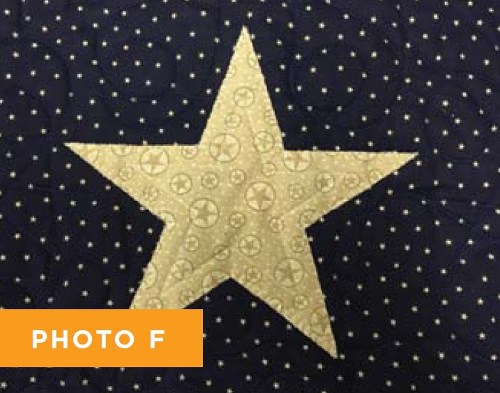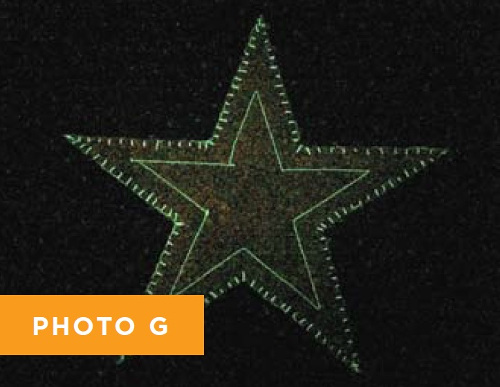Quilting the Quilt: Add a glow (with FREE bonus pattern)
When the summertime sun warms our faces, grilling brats at a picnic is a perfect way to spend the day. And when the sun sets low and the stars shine bright, catching fireflies on a cool summer night is a splendid way to end it! Wouldn’t it be great to have a quilt that could double as your picnic tablecloth as well as your stargazing blanket? Combine a simple pattern like this patriotic throw I’ve designed with some special glowin-the-dark thread and you’ve got both!
In the U.S., red, white and blue take center stage for much of the summer as stars and stripes dominate decorating schemes. This quilt is simple and quick to make, and by quilting some of the elements with glow-in-the-dark thread the quilt can easily transition from day to night.
Glow-in-the-dark thread comes in several shades that produce different colors after about 30-60 seconds of exposure to natural or artificial light (Photo A and B). The length of “glow time” varies for each product with an average time of about five hours. It can add sparkle to a baby quilt or make a spooky impact on a Halloween, too.
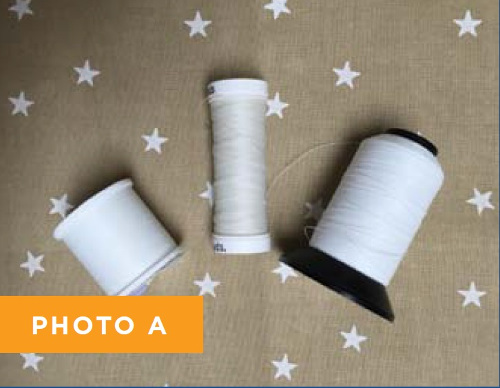
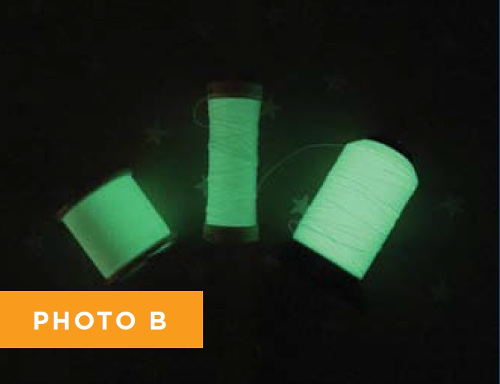
Specialty threads can present unique challenges to sewers and quilters. They can be sometimes be fragile, fussy, stretchy, rough, and even sticky. Finishes such as UV protection, water repellency or treatments to make the thread glow can affect tension and increase the risk of thread fraying and breaking. To use them successfully try to reduce as many friction points as possible along your thread path, which may mean figuring out how to bypass intermittent tensioners or extra guides if your machine has them. This may also require changing the routine thread path through the thread guides to reduce twist.
For example, the thread path on my APQS machine is simple, using a single disk thread tensioner to apply pressure to the thread as it passes through which makes it easy to loosen the tension and reduce friction.
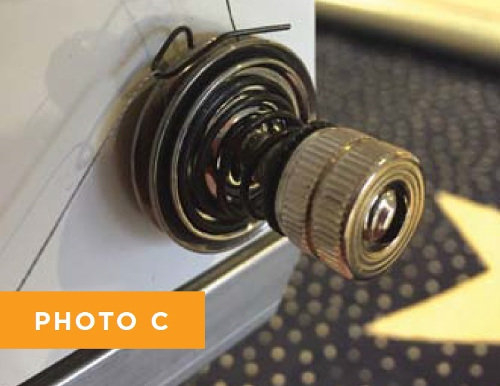
By contrast, with rotary-style tensioners the thread rubs against itself as it forces a tension wheel to rotate which increases friction. That can also increase fraying and tension issues.
A thread guide directly above my tensioner ensures that the thread stays between the discs while also straightening out the thread’s twist as
it leaves the cone or spool. Depending on how the thread is wrapped around the cone, I can change the thread path for better thread performance. For
example, when a spool is “stack-wound” the thread wraps around it in continuous spirals. These will typically work better if the spool is mounted horizontally so that the spool can rotate as you sew and if the thread passes through the guides as straight as possible as shown in Photo D.
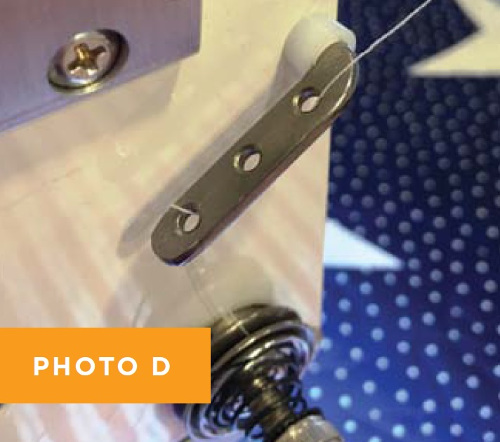
But if the thread crisscrosses the spool, then the thread should really feed off the end of the spool. That introduces additional twist to the thread which can cause knotting and looping problems if it must travel through several guides before reaching the tensioner. For this thread type, spiraling it through the thread guid on a longarm as you see in Photo E helps straighten it out as it enters the tensioner. You’ll find glow-in-the-dark thread available in both spool types; adjust your thread path accordingly.
Choose a needle size that allows the thread to pass easily through the eye. If the needle eye is too small then it will quickly fray the thread and increase
your frustration level. I used a 60-wt bobbin thread so that I could reduce the top thread tension and decrease the stress on the specialty thread. If
you use thicker thread (or glow-in-the-dark thread) in the bobbin then you may need to slow down to reduce heat build-up and friction on the
needle that also leads to breakage.
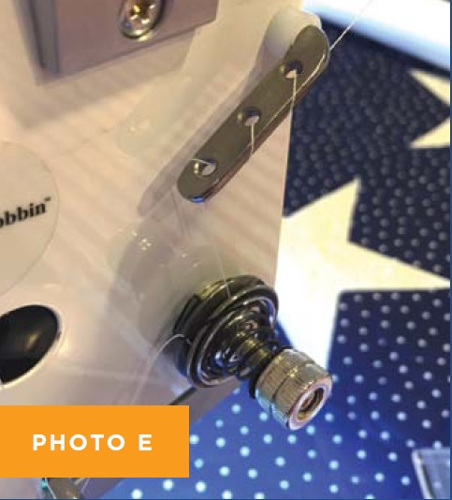
For my patriotic picnic quilt I used matching polyester thread on the blue and red fabrics but used 100% polyester glow-in-the-dark thread to stitch the striped fabric and around the stars. Glow-in-the-dark thread is very subtle with only one line of stitching so if you want it to really pop out, stitch over the area more than once. So that my stars could shine brighter, I hand-guided the machine to make a decorative “blanket stitch” edge using the Quilt Glide feature on my APQS longarm. Since a longarm machine is a straight-stitch machine, to achieve the blanket stitch I simply moved the machine along the outer edge of the applique and then stitched on and off the piece at regular intervals using tiny stitches. Photo F shows one of the stars in regular light, while Photo G shows how the star will glow once the lights go out. Enjoy your picnic and let the fireworks begin!
